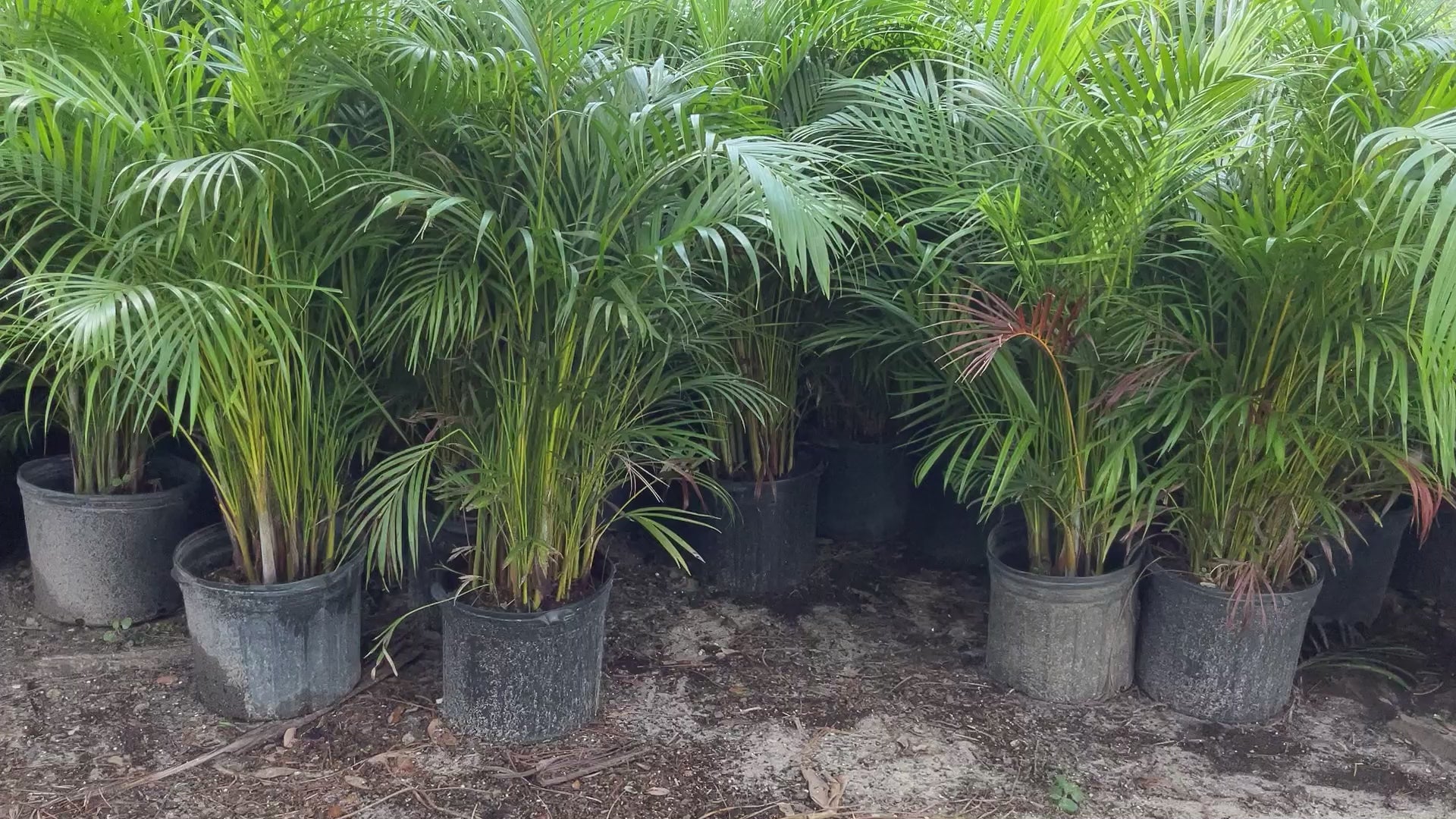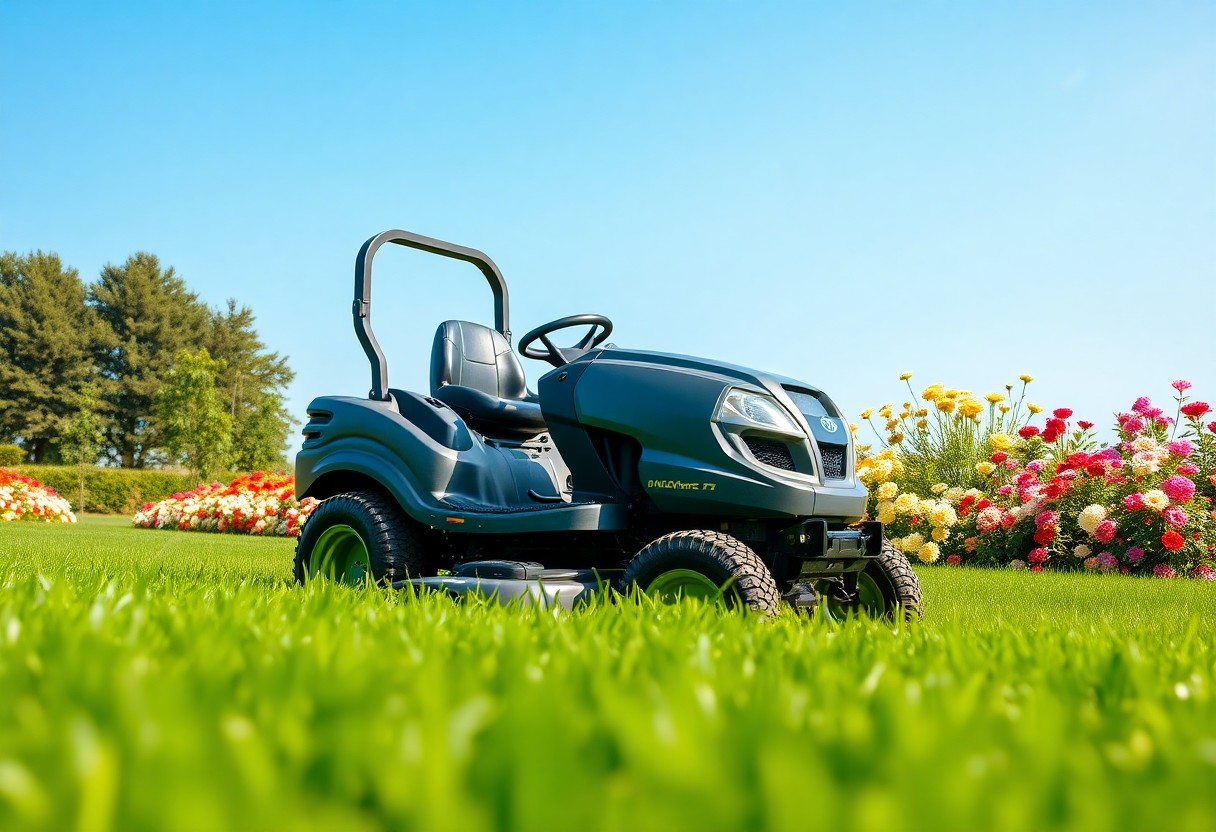
The Areca palm, scientifically known as Dypsis lutescens, is a captivating tropical plant that can transform any space into a lush, green oasis. Native to Madagascar, this elegant palm has gained popularity among plant enthusiasts for its feathery fronds and relatively easy care requirements. Whether you’re looking to add a touch of tropical flair to your indoor living space or create a stunning outdoor landscape, growing an Areca palm can be a rewarding experience. This comprehensive guide will walk you through every aspect of cultivating and caring for these beautiful palms, from understanding their natural habitat to mastering the art of pruning and maintenance.
Understanding Areca Palm

Before diving into the specifics of growing an Areca palm, it’s essential to understand its background and natural characteristics. This knowledge will provide a solid foundation for creating an environment where your palm can thrive.
Origin and Habitat
The Areca palm, also known as the Butterfly Palm or Golden Cane Palm, originates from the lush tropical forests of Madagascar. This island nation off the eastern coast of Africa is renowned for its unique biodiversity, and the Areca palm is one of its many botanical treasures. In its native habitat, the Areca palm thrives in the understory of rainforests, where it receives dappled sunlight filtered through the canopy of taller trees.
The climate in Madagascar is characterized by warm temperatures and high humidity, which have shaped the Areca palm’s preferences and adaptations. These palms are accustomed to growing in well-draining soil rich in organic matter, a legacy of their forest floor origins. Understanding this natural habitat provides valuable insights into recreating optimal growing conditions for your Areca palm.
In the wild, Areca palms often grow in clusters, forming dense stands that create their own microclimate. This clustering habit not only provides mutual support but also helps maintain humidity levels and protect the plants from strong winds. While cultivated Areca palms may not grow in such large groups, this natural tendency can inform how we care for them in our homes and gardens.
Characteristics of Areca Palm
The Areca palm is renowned for its graceful, arching fronds that give it a distinctive and appealing appearance. These fronds are composed of numerous narrow leaflets arranged along a central stem, creating a feather-like effect that earns it the nickname “Butterfly Palm.” The overall shape of the palm is typically upright and bushy, with multiple stems growing from a single base.
One of the most striking features of the Areca palm is its color. The stems, or canes, have a golden-green hue that becomes more pronounced with age, leading to its other common name, “Golden Cane Palm.” The fronds themselves are a vibrant, glossy green that can brighten any space. This combination of golden stems and green fronds creates a visually striking contrast that makes the Areca palm a standout in any setting.
In terms of size, Areca palms are considered medium-sized palms. When grown indoors, they typically reach heights of 6 to 7 feet, making them perfect for creating a tropical atmosphere without overwhelming the space. Outdoors, in ideal conditions, they can grow much taller, sometimes reaching up to 30 feet in height.
An interesting characteristic of the Areca palm is its air-purifying ability. NASA’s Clean Air Study identified the Areca palm as one of the most effective plants for removing indoor air pollutants, particularly formaldehyde, xylene, and toluene. This makes it not only an attractive addition to your home but also a functional one, contributing to a healthier indoor environment.
While Areca palms can produce small, yellowish flowers and orange-red fruits in their natural habitat, this is rare when grown indoors or in non-tropical climates. The focus for most growers is on the palm’s lush foliage rather than its reproductive features.
Understanding these characteristics will help you appreciate your Areca palm and provide the care it needs to thrive. As we delve deeper into the specifics of growing these palms, keep in mind their natural tendencies and preferences shaped by their tropical origins.
Choosing the Right Location

Selecting the perfect spot for your Areca palm is crucial for its growth and overall health. The right location will provide the palm with its essential needs while also showcasing its beauty to the fullest. Let’s explore the key factors to consider when choosing where to place your Areca palm.
Sunlight Requirements
Areca palms have specific light requirements that reflect their natural habitat as understory plants in tropical forests. They thrive in bright, indirect light, which mimics the dappled sunlight they would receive through the forest canopy. Understanding and meeting these light requirements is crucial for the palm’s health and appearance.
When grown indoors, place your Areca palm near a window that receives plenty of natural light throughout the day. East-facing windows are often ideal, as they provide bright morning light and softer afternoon light. South or west-facing windows can also work well, but you may need to filter the light with sheer curtains to prevent the intense afternoon sun from scorching the fronds.
It’s important to note that while Areca palms love bright light, direct sunlight can be harmful, especially during the hottest parts of the day. If you notice the fronds turning yellow or developing brown spots, it might be a sign of too much direct sunlight. In such cases, move the palm further from the window or provide some form of light filtering.
For outdoor Areca palms, choose a location that offers partial shade. They can tolerate some direct morning sun, but protection from the harsh afternoon sun is essential. Planting them under the canopy of larger trees or on the east side of a building can provide the ideal light conditions.
Remember that light conditions can change with the seasons. You may need to adjust the placement of your Areca palm or provide additional protection during different times of the year to maintain optimal light exposure.
Indoor vs Outdoor Placement
Areca palms are versatile plants that can thrive both indoors and outdoors, depending on your climate and available space. Each setting has its own considerations and challenges.
For indoor placement, consider the following:
- Room temperature: Areca palms prefer temperatures between 65°F and 75°F (18°C to 24°C). Avoid placing them near air conditioning vents or heating sources, which can cause temperature fluctuations and drafts.
- Humidity: Indoor environments are often drier than the palm’s natural habitat. Place a humidifier nearby or use a pebble tray filled with water beneath the pot to increase humidity levels.
- Space: Ensure there’s enough room for the palm to grow. Remember that a healthy Areca palm can reach 6 to 7 feet tall indoors.
- Air circulation: Good air flow helps prevent fungal issues. Avoid cramped or stuffy corners.
For outdoor placement, consider these factors:
- Climate: Areca palms are suitable for USDA hardiness zones 10-11. In colder regions, they should be grown in containers and brought indoors during winter.
- Wind protection: Choose a location sheltered from strong winds, which can damage the fronds.
- Soil conditions: Ensure the outdoor soil drains well and is rich in organic matter.
- Surrounding plants: Areca palms can work well in mixed tropical plantings but ensure they’re not overshadowed by larger, faster-growing plants.
Whether indoors or outdoors, regularly assess your Areca palm’s response to its environment. Look for signs of stress such as yellowing fronds, brown tips, or stunted growth, which may indicate that adjustments to its placement are needed.
By carefully considering these factors and choosing the right location, you’ll provide your Areca palm with the foundation it needs to thrive and showcase its tropical beauty.
Soil Preparation

The foundation of a healthy Areca palm lies in the soil it’s planted in. Proper soil preparation is crucial for providing the nutrients, moisture retention, and drainage that these tropical beauties require. Let’s delve into the specifics of creating the perfect growing medium for your Areca palm.
Ideal Soil Composition
Areca palms thrive in a well-draining, nutrient-rich soil that mimics their natural forest floor habitat. The ideal soil composition for these palms strikes a balance between moisture retention and drainage, providing a stable foundation for root growth while preventing waterlogging.
To create the perfect soil mix for your Areca palm, consider the following components:
- High-quality potting mix: Start with a base of good-quality potting soil. Look for a mix that contains peat moss, which helps retain moisture, and perlite or vermiculite, which improve drainage and aeration.
- Organic matter: Incorporate well-rotted compost or aged manure into your soil mix. This adds essential nutrients and improves the soil structure. Aim for about 25-30% organic matter in your mix.
- Coarse sand: Adding coarse sand to your mix enhances drainage. This is particularly important for Areca palms, as they are susceptible to root rot in waterlogged conditions. Use about 10-15% sand in your mix.
- Perlite or pumice: These lightweight, porous materials improve soil aeration and drainage. They also help prevent soil compaction over time. Add about 10-15% perlite or pumice to your mix.
- pH balancers: Areca palms prefer slightly acidic to neutral soil with a pH between 6.0 and 7.0. If your soil is too alkaline, you can add small amounts of sulfur or peat moss to lower the pH.
Here’s a sample recipe for an Areca palm soil mix:
- 50% high-quality potting soil
- 25% well-rotted compost
- 15% coarse sand
- 10% perlite
Remember, these proportions can be adjusted based on your specific growing conditions and the current state of your palm. If you live in a particularly humid area, you might want to increase the proportion of drainage materials like sand and perlite.
Drainage Considerations
Proper drainage is crucial for the health of your Areca palm. These plants are native to well-draining forest soils and are susceptible to root rot if left in standing water. Ensuring good drainage involves both the soil composition and the container or planting area setup.
For potted Areca palms:
- Choose the right pot: Select a container with adequate drainage holes. Terra cotta pots are excellent choices as they allow excess moisture to evaporate through their porous walls.
- Create a drainage layer: Before adding your soil mix, create a 1-2 inch layer of coarse materials at the bottom of the pot. This can be composed of gravel, broken pottery shards, or even styrofoam peanuts. This layer prevents soil from clogging the drainage holes and allows excess water to escape easily.
- Use a catch tray: Place a saucer or tray under your pot to catch excess water, but never let the pot sit in standing water. Empty the tray after watering.
For outdoor planting:
- Assess your soil: If you’re planting directly in the ground, assess your native soil’s drainage capabilities. You can do this by digging a hole about 12 inches deep, filling it with water, and observing how quickly it drains. If water stands for more than a few hours, you’ll need to improve drainage.
- Amend heavy soils: If your soil is heavy clay, mix in plenty of organic matter and coarse sand to improve drainage. You might also consider creating a raised bed or mound for your Areca palm.
- Consider French drains: In areas with poor drainage, installing a French drain system can help direct excess water away from your palm’s root zone.
Remember, while good drainage is essential, Areca palms also need consistent moisture. The goal is to create a soil environment that holds enough water for the plant’s needs while allowing excess to drain away freely.
By paying careful attention to your soil composition and drainage, you’re setting the stage for a thriving Areca palm. These preparations may take some time and effort, but they’re invaluable investments in the long-term health and beauty of your palm.
Planting Areca Palm
With the right location chosen and soil prepared, it’s time to plant your Areca palm. Whether you’re potting it for indoor use or planting it in your garden, proper planting techniques are crucial for establishing a healthy palm that will thrive for years to come.
Selecting the Right Container
If you’re growing your Areca palm in a container, choosing the right pot is essential for its growth and overall health. Here are some key factors to consider:
- Size: The container should be large enough to accommodate the palm’s root system with room for growth. As a general rule, choose a pot that’s 2-3 inches larger in diameter than the current root ball. For a newly purchased Areca palm, a 10-12 inch pot is usually sufficient to start.
- Material: While Areca palms can grow in various container materials, some are better suited than others:
- Terra cotta: These porous pots allow for good air circulation and help prevent overwatering. They’re heavy, providing stability for taller palms.
- Plastic: Lightweight and retain moisture well, which can be beneficial in dry environments. Ensure they have adequate drainage holes.
- Ceramic: Offer a decorative touch and good insulation for roots. Like terra cotta, they’re heavy and stable.
- Drainage: Regardless of the material, ensure the pot has sufficient drainage holes. Multiple smaller holes are often better than one large hole.
- Color: In hot climates, light-colored pots reflect heat and keep roots cooler.
- Depth: Areca palms have relatively shallow root systems, so deeper pots aren’t necessary. A pot that’s as deep as it is wide is usually sufficient.
Remember, as your Areca palm grows, you’ll need to repot it into larger containers. Plan to increase pot size by 2-3 inches in diameter every 2-3 years or when you notice roots growing through the drainage holes.
Transplanting Techniques
Whether you’re moving your Areca palm to a new pot or planting it in the ground, proper transplanting techniques are crucial for minimizing stress and encouraging healthy growth. Here’s a step-by-step guide to transplanting your Areca palm:
- Prepare the new location: If planting in a pot, add a layer of your prepared soil mix to the bottom. For garden planting, dig a hole twice the width of the root ball and as deep as the container.
- Water the palm: A day before transplanting, water your Areca palm thoroughly. This helps reduce transplant shock and makes removal from the current pot easier.
- Remove from current container: Gently tip the pot on its side and ease the palm out. If it’s stuck, tap the sides of the pot or run a knife around the edge to loosen it.
- Inspect and prune roots: Examine the root ball. If you see any circling or tangled roots, gently tease them apart. Trim any damaged or dead roots with clean, sharp scissors.
- Position in new location: Place the palm in its new pot or garden location. The top of the root ball should be level with or slightly above the soil surface.
- Backfill: For potted palms, add your soil mix around the roots, gently firming it down to eliminate air pockets. In the garden, use a mix of native soil and your prepared mix.
- Water thoroughly: After planting, water deeply to settle the soil around the roots. Add more soil if needed after watering.
- Mulch: For garden-planted palms, add a 2-3 inch layer of organic mulch around the base, keeping it away from the trunk to prevent rot.
- Provide support: If your palm is tall or in a windy area, consider staking it for the first few months to help it establish.
Aftercare:
- Keep the soil consistently moist but not waterlogged for the first few weeks after transplanting.
- Avoid fertilizing immediately after transplanting. Wait at least a month to allow the palm to establish in its new location.
- If possible, provide some shade for the first week or two to help the palm acclimate, especially if moving from indoor to outdoor locations.
Timing: The best time to transplant Areca palms is during the growing season, typically spring or early summer. This gives the palm time to establish before winter dormancy.
By following these planting and transplanting techniques, you’ll give your Areca palm the best start in its new home. Remember, it’s normal for the palm to show some signs of stress after transplanting, such as slight wilting or yellowing of lower fronds. With proper care, it should bounce back and thrive in its new location.
Watering and Humidity
Proper watering and maintaining adequate humidity are crucial aspects of Areca palm care. These tropical beauties have specific moisture requirements that, when met, contribute significantly to their health and vibrant appearance. Let’s explore the best practices for watering your Areca palm and creating the humid environment it craves.
Watering Frequency
Areca palms prefer consistently moist soil but are sensitive to overwatering. Finding the right balance is key to preventing both drought stress and root rot. Here’s a guide to help you establish a proper watering routine:
- Soil moisture check: Before watering, always check the moisture level of the soil. Insert your finger about 1-2 inches into the soil. If it feels dry at this depth, it’s time to water.
- **Water Glugging: When you do water, make sure to do so thoroughly. Pour enough water until you see it draining from the bottom of the pot. This ensures that the entire root system is receiving adequate hydration. After watering, let the plant sit in the drainage tray for no more than 30 minutes to avoid the risk of standing water, which can lead to root rot.
- Seasonal Variation: Adjust your watering frequency according to seasonal changes. In warmer months, you might find yourself watering once or twice a week, while during cooler months, cut down to every 10-14 days. As a general rule, it’s always best to err on the side of underwatering rather than overwatering, as Areca palms are more resilient to dryness than sogginess.
Maintaining Humidity Levels
Creating a humid environment is essential for the health of an Areca palm. Given its tropical origin, the palm thrives in humidity levels between 40% and 60%. Here’s how you can provide the moisture it needs:
- Misting: A simple solution is regular misting. Use a spray bottle with fine mist settings to lightly spritz the leaves, especially during dry seasons or if your home has low humidity due to heating or air conditioning. Misting not only raises humidity but also gives the leaves a refreshing clean.
- Humidity Trays: Another effective method is to create humidity trays. Fill a shallow tray with pebbles and add water—just enough to reach the top of the pebbles without submerging them. Place your Areca palm on top. As the water evaporates, it raises humidity around the plant.
- Grouping Plants: If you have multiple houseplants, consider grouping them together. Plants release moisture through a process called transpiration, and by clustering them, you’ll naturally elevate humidity levels in that small microenvironment.
- Investing in a Humidifier: For serious indoor gardeners, particularly in climates known for arid conditions, purchasing a humidifier can be beneficial. This creates a stable environment conducive for various tropical plants, including your Areca palm.
- Monitoring Tools: To effectively maintain proper humidity levels, you might want to invest in a hygrometer—a device that measures humidity—allowing you to monitor the atmosphere around your palm and adjust care routines as necessary.
By paying close attention to watering and humidity needs, your Areca palm can flourish, showcasing its lush, vibrant foliage.
Fertilization Needs
Fertilizing your Areca palm is essential for promoting healthy growth and maintaining its bright, green fronds. The right fertilization can enhance the overall appearance of your plant, contributing to its resilience and vitality. Let’s delve into types of fertilizers, suitable application methods, and the ideal schedule for feeding your palm.
Types of Fertilizers
There are several fertilizer options available, each catering to different growth phases and nutritional requirements of your Areca palm:
- Balanced Liquid Fertilizer: A good starting point is a balanced liquid fertilizer with equal parts of nitrogen, phosphorus, and potassium (N-P-K). Look for numbers such as 10-10-10 or 20-20-20. Liquid fertilizers are easy to apply, provide immediate nutrients, and can be diluted based on the manufacturer’s recommendations.
- Slow-Release Granules: For convenience, many growers opt for slow-release granular fertilizers. These formulations gradually release nutrients over 3-6 months, offering a steady supply without frequent applications. When choosing, select one specifically designed for palms, as they contain crucial micronutrients.
- Organic Fertilizers: For those wanting a more sustainable approach, organic options like fish emulsion, seaweed extract, or composted manure can enrich the soil. Although they may take longer to show effects, organic fertilizers often result in healthier overall growth and improved soil fertility.
- Specialized Palm Fertilizers: Some brands offer formulas specifically designed for palm trees. These usually include additional minerals like magnesium and iron, promoting vibrant leaf coloration and robust growth.
Fertilizing Schedule
Creating a fertilization schedule tailored to your Areca palm’s growth cycle enhances its health and appearance.
- Growing Season: Spring and summer are peak growing months for Areca palms, making this the optimal time to start your fertilization routine. Feed your palm every four to six weeks during this period.
- Dormancy Phase: Come fall, taper off fertilization as the plant enters dormancy. It’s best to stop completely during winter since any added nutrients can encourage new growth that cannot be supported in cooler temperatures.
- Signs of Under-Fertilization: If you notice yellowing fronds or slowed growth, these could indicate nutrient deficiencies. You might need to reassess your fertilization schedule and consider a light application of liquid fertilizer.
By understanding and implementing the appropriate fertilization techniques, you’ll support your Areca palm’s long-term health and enhance its aesthetic appeal within your living space.
Pest and Disease Management
Pest infestations and disease issues can seriously affect the health of an Areca palm. Identifying potential problems early on and implementing preventive measures can spare you substantial headaches down the line. Let’s address common pests, their symptoms, and effective treatments.
Common Pests Affecting Areca Palm
Several pests are particularly drawn to Areca palms, including spider mites, mealybugs, scale insects, and aphids. Observation is key in identifying these nuisances before significant damage occurs.
- Spider Mites: These tiny arachnids thrive in dry environments and tend to cause stippling on leaves, leading to webbing under fronds. Inspect both sides of leaves, as these pests love to hide. Should you find evidence of spider mites, increase humidity levels and introduce neem oil or insecticidal soap for treatment.
- Mealybugs: Easily recognizable by their white cotton-like appearance, these pests cluster near leaf joints and base areas. They damage the plant by sucking sap, resulting in stunted growth. To tackle mealybugs, gently wipe them away with a cotton swab dipped in alcohol or repeat applications of neem oil.
- Scale Insects: Scale looks like small bumps on stems and leaves. These pests are immobile and feed on plant juices, causing yellowing leaves. Treatment includes scraping them off with a soft brush and applying systemic insecticides if necessary.
- Aphids: Tiny and often found in colonies, aphids are notorious sap-suckers that distort new growth. Regularly inspect your palm, and if detected, try blasting them off with water or utilizing ladybugs for biological control.
Preventive Measures and Treatments
Taking proactive steps to prevent pest infestations is the best course of action.
- Maintain Healthy Conditions: Pests are more likely to invade stressed or unhealthy plants. Ensure your Areca palm gets appropriate sunlight, water, and humidity. A healthy plant is better equipped to resist infestations.
- Quarantine New Plants: Always keep new plants separate for at least two weeks before introducing them to your collection. This helps ensure pests don’t hitch a ride on unsuspecting new arrivals.
- Regular Inspections: Make it a habit to check your Areca palm regularly for any signs of distress or pest activity. Early detection can save you a lot of trouble later on.
- Environment Manipulation: Introduce beneficial insects like ladybugs or lacewings, which prey on common pests. Also, if indoors, consider rotating locations periodically; pest populations don’t thrive as well when their environment changes.
Maintaining vigilance in pest and disease management ensures your Areca palm remains stunning and healthy, allowing it to beautify your space for years to come.
Pruning and Maintenance
Pruning is not merely an aesthetic procedure; it’s vital for the overall health of Areca palms. Proper maintenance can enhance growth patterns, remove unsightly fronds, and even help prevent disease. Let’s explore when and how to prune your Areca palm effectively.
When to Prune Areca Palm
Understanding the right timing for pruning is crucial.
- Late Winter to Early Spring: The ideal window for pruning Areca palms is right before the active growing season starts, typically in late winter or early spring. During this time, the plant is preparing for new growth, and the absence of any unnecessary fronds allows for energy conservation.
- Removing Dead or Damaged Fronds: Regularly trim dead, brown, or diseased leaves throughout the year. Removing these will not only improve the plant’s appearance but will also minimize the risk of pests and fungal infections.
- Shaping and Maintenance: If your Areca palm grows too tall or spreads too wide, shape it periodically by snipping back excess fronds. Aim to maintain a balanced canopy to promote even sunlight access throughout the plant.
Tools Needed for Pruning
The right tools make all the difference in ensuring a clean and effective pruning job.
- Sharpened Shears: Invest in a pair of sharp gardening shears specifically designed for pruning. Dull blades can crush stems and invite disease.
- Gloves: Protect your hands from any sap or irritants present on the plant’s leaves. Durable gardening gloves offer protection and grip.
- Disinfectants: Before pruning, clean your tools using rubbing alcohol or bleach to avoid transmitting diseases from one plant to another. Clean tools significantly reduce chances of contamination.
- Spray Bottle: Keep a spray bottle of clean water handy to mist the freshly pruned areas. This helps soothe the plant after severe cuts and minimize stress on remaining fronds.
By embracing proper pruning practices and employing the right tools, your Areca palm can flourish beautifully, maintaining its lush elegance while optimizing health.
Conclusion
Caring for an Areca palm involves several critical factors—from selecting the right location, soil, and container to ensuring comprehensive watering, humidity, fertilization, pest management, and consistent pruning. By attending to each of these fundamental details, you can nurture a thriving plant that not only enhances the beauty of your space but also provides numerous benefits to indoor air quality.
As a resilient tropical plant, the Areca palm serves as both a beautiful indoor accent and an admirable outdoor specimen. Whether placed in a sunlit corner of your home or gracing your garden, it embodies an invitation to embrace nature’s beauty, balance, and tranquility.
Embarking on the journey of growing an Areca palm is undoubtedly rewarding. Each frond reflects your dedication, knowledge, and efforts put into creating an oasis of calm and comfort in your life. With patience and enthusiasm, your Areca palm will reward you with lush greenery and a touch of tropical vibes that brighten your daily routine.







